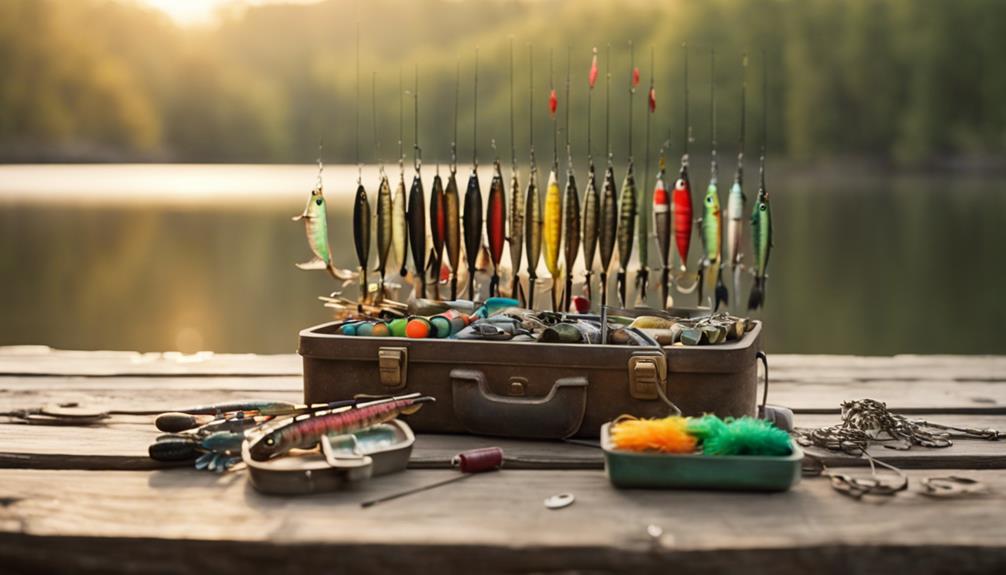Fishing enthusiasts eagerly await opening day fishing like kids wait for Christmas morning. This annual event marks the commencement of fishing season in many states, bringing together families and friends to enjoy the great outdoors. In this detailed guide, we’ll explore the significance of opening day fishing, its history, how to prepare for it, and tips for making the most of this exciting day.
The Significance of Opening Day Fishing
Opening day fishing is more than just a day on the calendar; it represents the beginning of a much-anticipated season for anglers across the country. Traditionally, this event allows fishermen to cast their lines in lakes, rivers, and streams that have been closed to fishing during the winter months. Many states have specific regulations regarding the opening day, including designated fishing locations and the types of fish that can be caught. This day fosters a sense of community among anglers, as families gather together to share stories, techniques, and the joys of fishing.
Historical Context of Opening Day Fishing
To understand when opening day fishing occurs, it’s important to delve into its historical context. The tradition of opening day fishing dates back to the early 20th century when states began implementing fishing regulations to conserve fish populations. As a result, designated seasons were established, culminating in a single day when fishing would officially resume. These regulations aimed to protect spawning fish and ensure sustainable fishing practices. The excitement surrounding opening day has grown over the years, with many states hosting festivals and events to celebrate this annual rite of passage.
When is Opening Day Fishing?
When is opening day fishing? The answer varies by state, as each has its own regulations regarding the fishing season. Typically, opening day falls in late April to early May, aligning with warmer weather and fish spawning cycles. For example, in New York, opening day is usually the third Saturday in April, while in California, it often occurs on the last Saturday of April. It’s crucial to check your state’s Department of Fish and Wildlife website for specific dates, as they may change annually based on environmental conditions and fish populations.
Preparing for Opening Day Fishing
Preparation is key to a successful opening day fishing experience. First and foremost, ensure you have the necessary fishing license, which may vary depending on your state and whether you’re a resident or a visitor. Next, gather your fishing gear, including rods, reels, tackle, and bait. It’s also helpful to familiarize yourself with local fishing spots and conditions. Online forums and local fishing shops can provide valuable insights into where the fish are biting. Lastly, consider inviting friends or family members to share the excitement of the day.
Tips for a Successful Opening Day Fishing Experience
To maximize your chances of success on opening day fishing, consider these essential tips. First, arrive early at your chosen fishing location to secure a prime spot. Fish tend to be more active in the early morning, making this the best time to cast your line. Second, be adaptable; if one fishing technique isn’t working, don’t hesitate to switch it up. Whether you’re using live bait or lures, experimenting with different methods can lead to a more fruitful day. Lastly, practice patience. Fishing is as much about the experience as it is about catching fish, so enjoy the tranquility of nature while waiting for that tug on your line.
Family-Friendly Activities on Opening Day Fishing
Opening day fishing is not just about the fish; it’s about creating lasting memories with loved ones. To make the day more enjoyable for everyone, consider incorporating family-friendly activities. Organize a picnic by the water, complete with snacks and beverages to keep everyone fueled. Bring along games or activities such as frisbee or cards to keep the non-fishing participants engaged. Sharing stories and bonding over the day’s experiences can enhance the outing and create cherished memories, ensuring that opening day fishing is a tradition for years to come.
Understanding Local Fishing Regulations
Before you head out for opening day fishing, it’s crucial to familiarize yourself with local fishing regulations. Each state has specific rules regarding fishing limits, sizes of fish, and permissible fishing methods. Violating these regulations can result in hefty fines and puts a strain on fish populations. Many states offer pamphlets or online resources detailing these regulations. Additionally, consider following ethical fishing practices, such as catch and release, to help sustain fish populations for future generations. Being informed not only enhances your fishing experience but also contributes to conservation efforts.
The Future of Opening Day Fishing
As we look towards the future of opening day fishing, it’s essential to recognize the impact of environmental changes and fishing practices. Climate change, pollution, and overfishing are significant threats to aquatic ecosystems and can alter fish populations and habitats. Advocacy for sustainable fishing practices and conservation is crucial to ensure that future generations can enjoy the thrill of opening day fishing. Many organizations and local groups work tirelessly to protect these resources, and getting involved can make a difference. Emphasizing education and awareness will keep the tradition of opening day fishing alive and thriving for years to come.
In conclusion, opening day fishing is a cherished tradition that brings people together to celebrate the joys of fishing. From understanding the historical context and preparing for the day to enjoying family-friendly activities, there’s much to appreciate about this iconic event. By adhering to local regulations and practicing sustainable fishing, anglers can ensure that opening day fishing remains a vibrant part of our culture for generations to come. So, mark your calendars and prepare your gear—opening day fishing is just around the corner!
